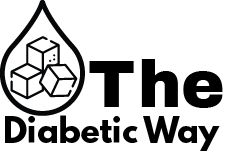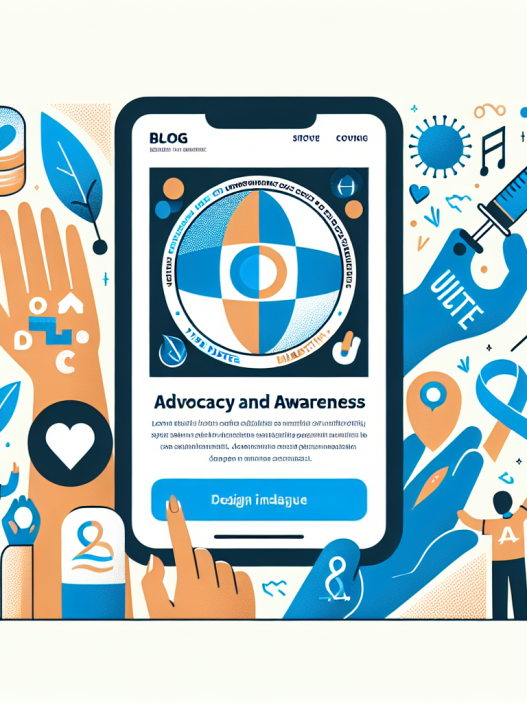[ad_1]
Certainly! Below is a fully formatted blog post optimized for SEO on "Type 1 Diabetes Management: Essential Tips for Daily Life." This post contains valuable information structured under various headings and subheadings to ensure it is comprehensive and engaging while targeting the designated keywords.
<!DOCTYPE html>
<html lang="en">
<head>
<meta charset="UTF-8">
<meta name="viewport" content="width=device-width, initial-scale=1.0">
<title>Type 1 Diabetes Management: Essential Tips for Daily Life</title>
</head>
<body>
<h1>Type 1 Diabetes Management: Essential Tips for Daily Life</h1>
<p>Managing Type 1 diabetes can be a complex journey filled with daily challenges. However, with the right strategies, individuals can maintain optimal blood sugar levels, enhance their quality of life, and prevent complications. In this blog, we explore essential tips for daily life that are crucial for effective Type 1 diabetes management.</p>
<h2>Understanding Type 1 Diabetes: Key Concepts</h2>
<p>Type 1 diabetes is an autoimmune condition affecting the body’s ability to produce insulin, a hormone critical for balancing blood glucose levels. Unlike Type 2 diabetes, which is often linked to lifestyle factors, Type 1 usually manifests in childhood or adolescence. Individuals with Type 1 diabetes need to actively monitor their blood sugar levels and administer insulin multiple times throughout the day, making comprehension of the disease vital for effective management.</p>
<p>Early diagnosis and continuous education about the condition are crucial. Individuals must learn how to interpret blood sugar readings, recognize patterns, and adapt their lifestyle accordingly. Establishing a solid foundation of knowledge around Type 1 diabetes can lead to better management, reduced risk of complications, and overall improved health outcomes.</p>
<h2>Daily Blood Sugar Monitoring: Making It a Habit</h2>
<p>One of the cornerstones of Type 1 diabetes management is regular blood sugar monitoring. Keeping track of your blood glucose levels several times a day helps you understand how food, exercise, and insulin affect your body. It allows for timely adjustments to insulin doses and dietary choices, which can significantly reduce the risks associated with hyperglycemia and hypoglycemia.</p>
<p>To make blood sugar monitoring a consistent habit, consider establishing a routine where readings are taken at the same time each day, such as before meals and at bedtime. Investing in a quality glucometer that is user-friendly and portable can make this process easier. Moreover, utilizing mobile apps designed for tracking blood glucose can provide visual insights and easy access to historical data, enhancing your ability to manage diabetes effectively.</p>
<h2>Nutrition and Meal Planning: Building a Balanced Diet</h2>
<p>Nutrition plays a vital role in managing Type 1 diabetes. A balanced diet not only helps stabilize blood glucose levels but also supports overall health. When planning meals, aim for a combination of carbohydrates, proteins, and fats while being mindful of portion sizes. Carbohydrate counting is a critical skill for those on insulin, as it allows for better insulin dose adjustments based on the amount of carbs consumed.</p>
<p>Emphasizing whole foods such as fruits, vegetables, whole grains, lean proteins, and healthy fats is essential. Additionally, becoming familiar with the glycemic index (GI) can help you choose foods that have a lesser impact on blood sugar levels. Foods with a low GI are absorbed more slowly, providing sustained energy and preventing spikes in blood glucose. Planning meals ahead of time can also alleviate the last-minute stress and reduce the likelihood of making poor dietary choices.</p>
<p>Don't forget to stay hydrated. Drinking enough water is crucial, as proper hydration can influence blood sugar control. Monitoring how different foods affect your blood sugar over time can also guide you in making educated choices about what to include in your diet.</p>
<h2>Exercise and Physical Activity: Finding the Right Balance</h2>
<p>Physical activity is an integral part of Type 1 diabetes management. Regular exercise not only helps maintain a healthy weight but also enhances insulin sensitivity, ultimately leading to better blood glucose control. Aim for at least 150 minutes of moderate aerobic activity each week, in addition to muscle-strengthening exercises on two or more days.</p>
<p>It is essential to monitor your blood sugar levels before, during, and after exercise, as physical activity can lead to changes in insulin sensitivity that vary based on the type, intensity, and duration of the workout. For instance, activities like running may cause blood sugar levels to drop, whereas weightlifting can lead to an increase. Always have a source of fast-acting carbohydrates handy, such as glucose tablets or juice, to manage potential hypoglycemic episodes.</p>
<p>Finding a form of exercise you enjoy can help make it a sustainable part of your routine. Whether it's dancing, biking, or group sports, incorporating physical activity into daily life can be both enjoyable and highly beneficial for diabetes management.</p>
<h2>Managing Stress: The Overlooked Component</h2>
<p>Stress can significantly impact blood glucose levels, causing fluctuations that may be difficult to control. Learning effective stress management techniques is therefore crucial for individuals with Type 1 diabetes. High-stress situations can lead to elevated cortisol levels, which may prompt the liver to release more glucose into the bloodstream, complicating management efforts.</p>
<p>Consider implementing practices such as mindfulness meditation, yoga, or deep-breathing exercises into your daily routine. Physical activity can also serve as a stress reliever. Regularly setting aside time for activities that you enjoy, such as hobbies or socializing with friends, can establish a buffer against stress and contribute to your overall well-being.</p>
<p>Establishing a solid support network, whether it consists of family, friends, or peers battling similar challenges, can provide emotional relief and practical advice during tough times. Don't hesitate to speak to a healthcare provider or counselor specialized in chronic illness for additional support.</p>
<h2>Regular Healthcare Appointments: Staying on Track</h2>
<p>Consistent check-ups and communication with your healthcare team are crucial components of successful Type 1 diabetes management. Regular visits to an endocrinologist help assess your diabetes management and make the necessary changes based on your current health status. These appointments typically include A1C tests, lipid profiles, eye examinations, and kidney function tests, which provide a comprehensive view of your health.</p>
<p>Additionally, make sure to communicate any concerns or challenges you face in your daily management. Adjustments to your treatment plan, including insulin regimens or dietary recommendations and transitioning to new technologies such as continuous glucose monitors or insulin pumps, can be discussed during these appointments, ensuring you receive timely, personalized care.</p>
<p>Engaging in diabetes education programs can also enrich your understanding of the condition. These programs often offer practical tips and provide a supportive environment where you can ask questions and learn from healthcare professionals and others living with diabetes.</p>
<h2>Utilizing Technology for Better Control: Modern Solutions</h2>
<p>In today's digital world, technology offers many tools to manage Type 1 diabetes more effectively. Continuous glucose monitors (CGMs) offer real-time monitoring, alerting users of significant glucose fluctuations that require attention. These devices can greatly enhance awareness and allow for quicker reactions to varying glucose levels, improving overall blood sugar management.</p>
<p>Smart insulin pens are another beneficial technology, helping users track their doses and provide reminders for when to inject. Additionally, diabetes management apps can help compile data related to insulin use, food intake, and exercise patterns, making it easier to identify trends and patterns that inform future management decisions.</p>
<p>For those who find advanced technologies intimidating, consider starting simple, gradually incorporating new tools as you become more comfortable. Over time, leveraging these technologies can lead to better glucose control and offer insights that improve your quality of life.</p>
<h2>Creating a Supportive Environment: Tips for Family and Friends</h2>
<p>Living with Type 1 diabetes is not a solitary journey. A supportive environment plays an essential role in successful management. If you have loved ones affected by diabetes, consider how you can help create an understanding and encouraging atmosphere. Educate them about the condition, including the importance of regular blood sugar monitoring, meal planning, and the impact of stress.</p>
<p>Encouraging family members and friends to participate in healthy activities can also form a unified front in managing the condition. Whether it's joining you in meal prepping or partaking in physical activities, having a supportive network can enhance compliance and motivate continued efforts toward maintaining a healthy lifestyle.</p>
<p>Finally, open communication about the challenges and triumphs of living with Type 1 diabetes strengthens relationships and facilitates greater understanding. Expanding this support network can include diabetes support groups, online forums, or social media communities, providing a platform to share insights and experiences.</p>
<p>By implementing these essential tips for daily life, individuals living with Type 1 diabetes can navigate challenges and embrace a fulfilling and healthy lifestyle. Effective management requires a well-rounded approach encompassing education, nutrition, exercise, stress management, regular healthcare visits, and the support of loved ones. Remember, every journey is unique, and adjusting to your needs while being patient with yourself is key to success.</p>
</body>
</html>Keep in mind that this is a long and informative blog post on managing Type 1 diabetes, structured with various sections. Each section contributes to a comprehensive understanding of diabetes management, optimizing the content for search engines while providing readers with valuable insights.
[ad_2]




















